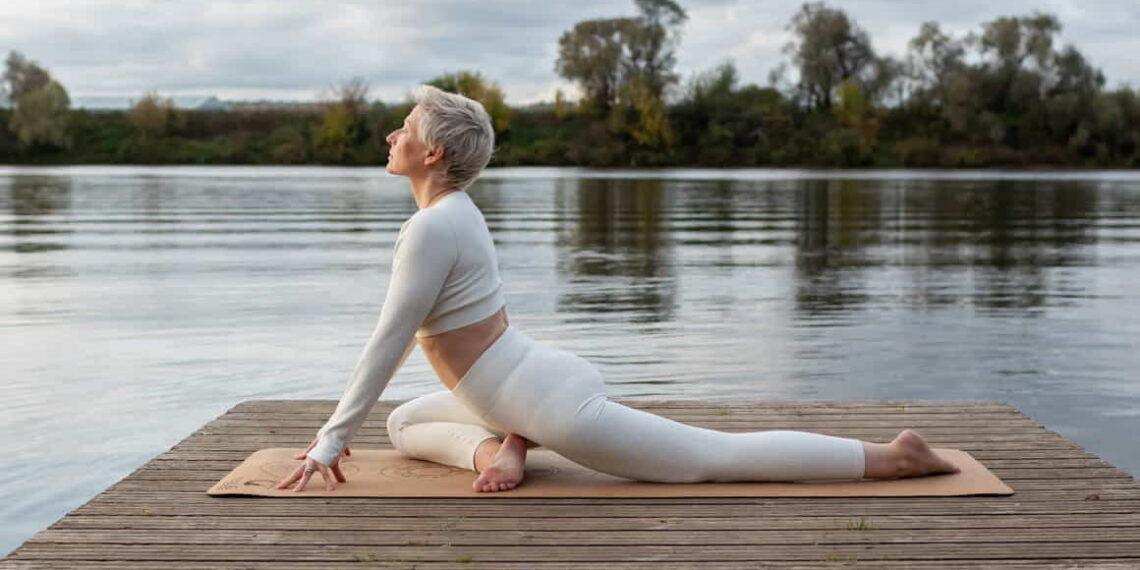Are You Stretching Correctly? Fitness Experts Break Down What to Do Before and After Your Workout
When you head into the gym, you likely already have a workout in mind—whether it’s a light jog on the treadmill or some bicep curls on arm day. But to get the most out of your session, it’s essential to consider how you start and end your workout.
Why Stretching Matters
Warming up muscles before exercise and cooling them down afterward is crucial for optimal performance and injury prevention. Stretching helps circulate blood to your muscles, improving flexibility and increasing your range of motion. More flexibility means better performance, especially in exercises that involve bending, pulling, or contracting. Stretching can also reduce your risk of injury.
“A lot of people skip stretching and jump right into the workout,” says Whitney Houlin, personal trainer and director of training and fitness at WeGym in West Hartford, Connecticut. “But stretching before and after your workout is key to making it more effective, both for today and for future sessions.”
If you’re looking for better results or hitting a plateau, incorporating dynamic and static stretching into your routine can make a significant difference.
Dynamic vs. Static Stretching
Dynamic Stretching involves moving your joints through their full range of motion to increase flexibility. These stretches prepare your body for the active movements of your workout.
Static Stretching involves holding a stretch for several seconds and is typically done post-workout to help your muscles relax and recover. Static stretches can be active (using muscles to hold the stretch) or passive (relying on gravity or tools to extend the muscle).
What’s the Best Stretch Before a Workout?
Research on pre-workout stretching has yielded mixed results. Some studies suggest static stretches can reduce muscle performance, while others show that they may boost strength. However, more recent studies suggest dynamic stretching is more effective for preparing the body for exercise.
Physical therapist Dr. Mario Mejia recommends dynamic stretching before a workout. “Dynamic stretches mirror the movements you’ll do during exercise, which is why they’re so effective,” says Mejia, who works with patients at Fox Rehabilitation in Rockville Centre, New York. “In a workout, you’re rarely still—you’re moving multiple joints at once. Dynamic stretches increase your range of motion and activate the muscles you’ll be using.”
Recommended Dynamic Stretches
One of Houlin’s favorite dynamic stretches is The World’s Greatest Stretch. Here’s how to do it:
- Start standing, then hinge at the hips and walk your hands out into a plank position.
- Engage your core for stability.
- Step one foot next to your hand, like a deep runner’s lunge.
- Lift your opposite hand off the floor and twist your upper body.
- Put your hand back on the floor and step back to plank, then walk your hands back to your feet and roll back up to standing.
Another great dynamic stretch is the alternating forward and reverse lunges, which help warm up your legs. Half-kneeling windmills are also beneficial for spine rotation, building core strength, and stabilizing the hips and shoulders.
What’s the Best Stretch After a Workout?
After a workout, static stretches are the way to go. These stretches help bring your body back to a relaxed state, gradually lowering your heart rate, body temperature, and blood pressure.
“Stretching the muscles you just worked on helps bring blood flow to those areas, which speeds up muscle repair,” Houlin says. “It also helps with flexibility and reduces the chances of muscle pain or stiffness.”
Dr. Mejia adds that static stretching increases muscle elasticity and can help prevent soreness. “During activities like running, you’re contracting and elongating your muscles for extended periods. Static stretches help lengthen the muscle fibers, improving flexibility.”
Recommended Static Stretches
- Pigeon Pose: Great for hip flexors and glutes. Start on the ground, with one leg bent at a 90-degree angle and the other leg extended behind you.
- Hamstring Stretch: Hold your foot in front of you and lean forward to stretch the back of your legs.
- Standing Quad Stretch: Stand on one leg, bend the knee of the other leg, and grab the foot, pulling it toward your rear to stretch your quadriceps and hip flexors.
For static stretches, hold each stretch for 15-30 seconds and repeat for two to four sets to effectively improve flexibility and range of motion.
Incorporating both dynamic stretching before and static stretching after your workout will not only improve your performance but also minimize the risk of injury. By taking the time to warm up and cool down properly, you’re setting yourself up for success in every gym session.
This article was rewritten by JournosNews.com based on verified reporting from trusted sources. The content has been independently reviewed, fact-checked, and edited for accuracy, neutrality, tone, and global readability in accordance with Google News and AdSense standards.
All opinions, quotes, or statements from contributors, experts, or sourced organizations do not necessarily reflect the views of JournosNews.com. JournosNews.com maintains full editorial independence from any external funders, sponsors, or organizations.
Stay informed with JournosNews.com — your trusted source for verified global reporting and in-depth analysis. Follow us on Google News, BlueSky, and X for real-time updates.














